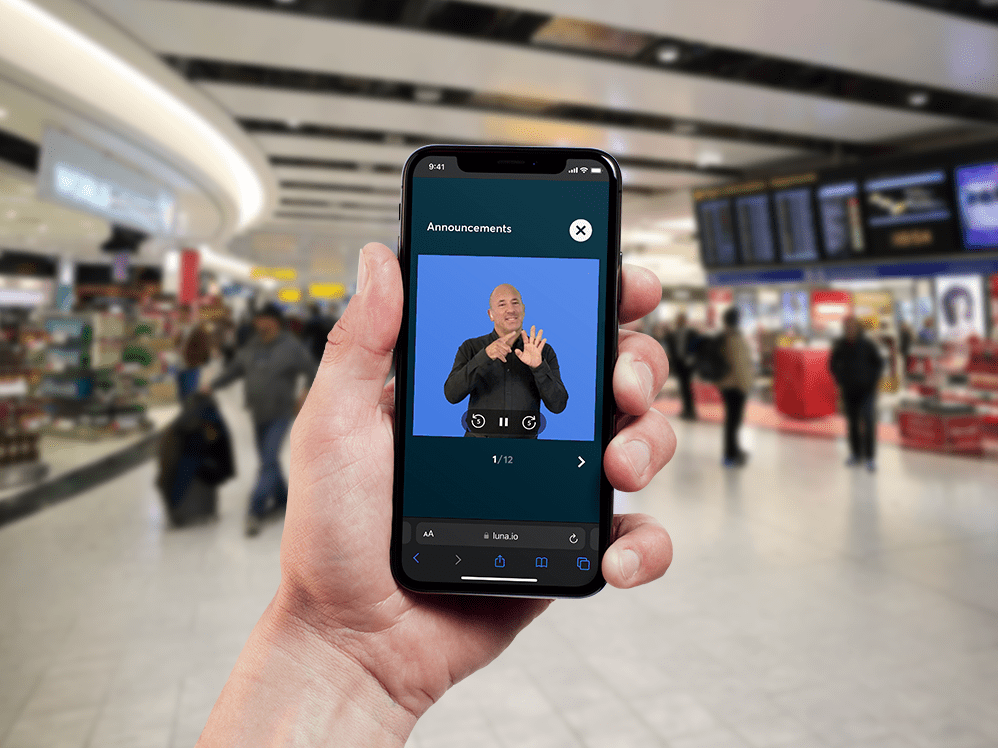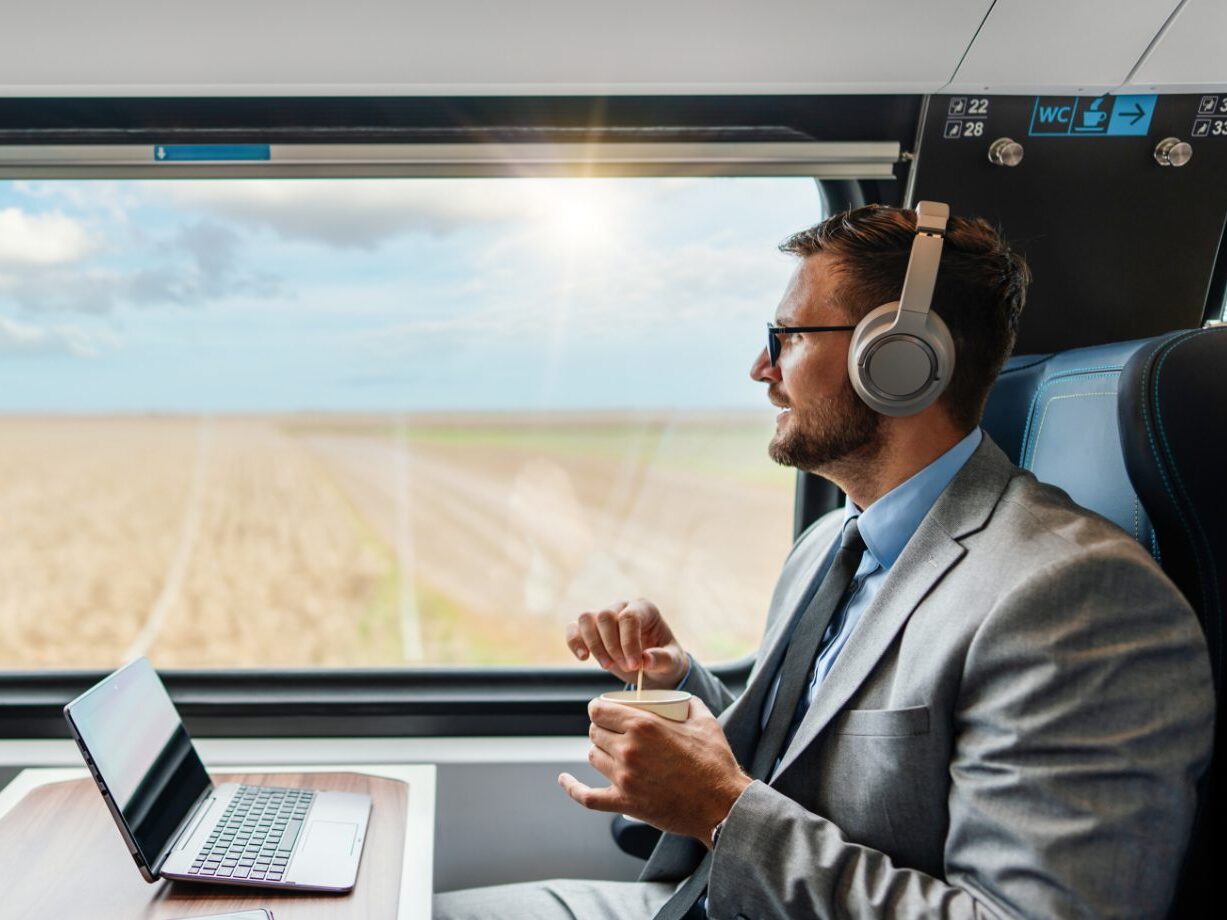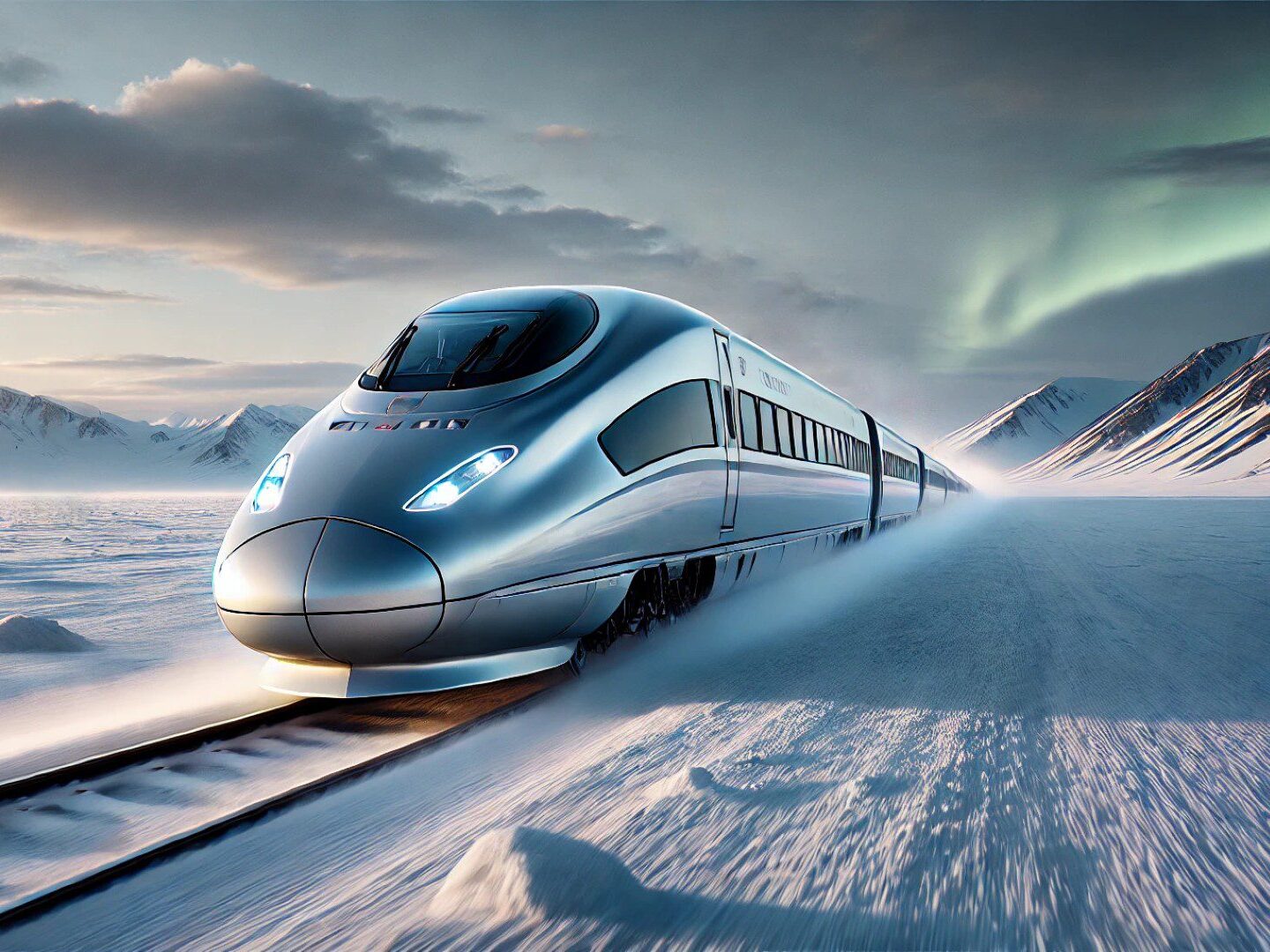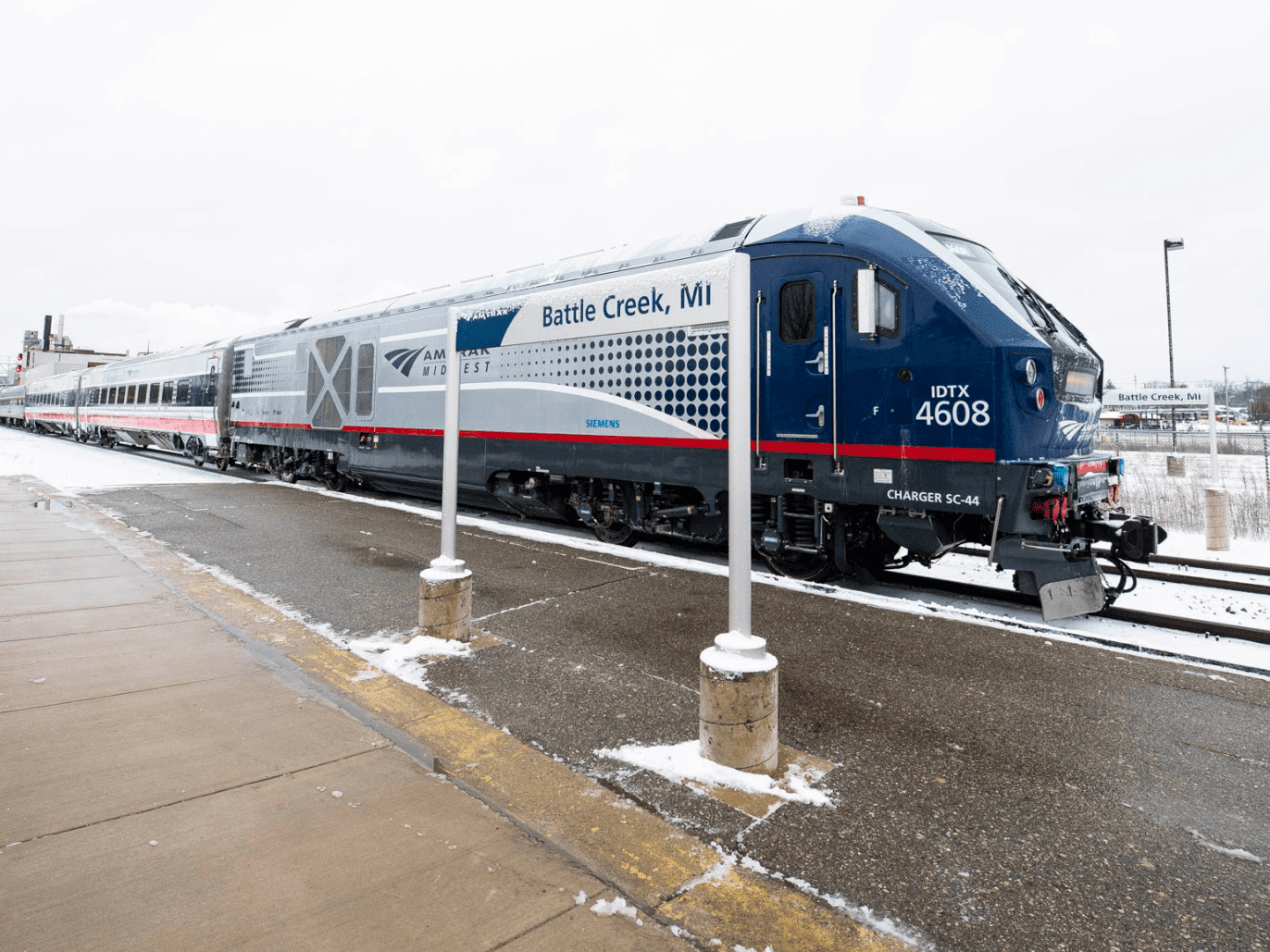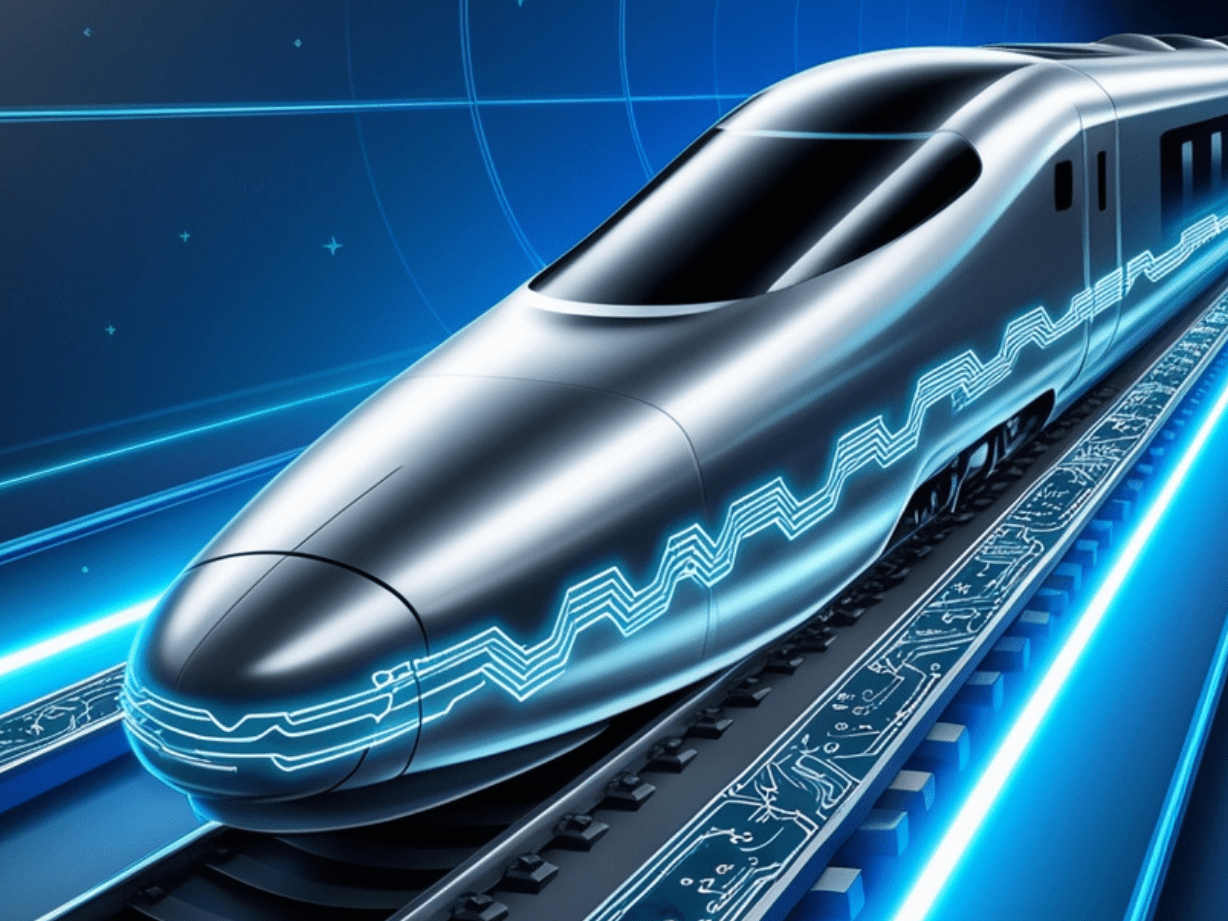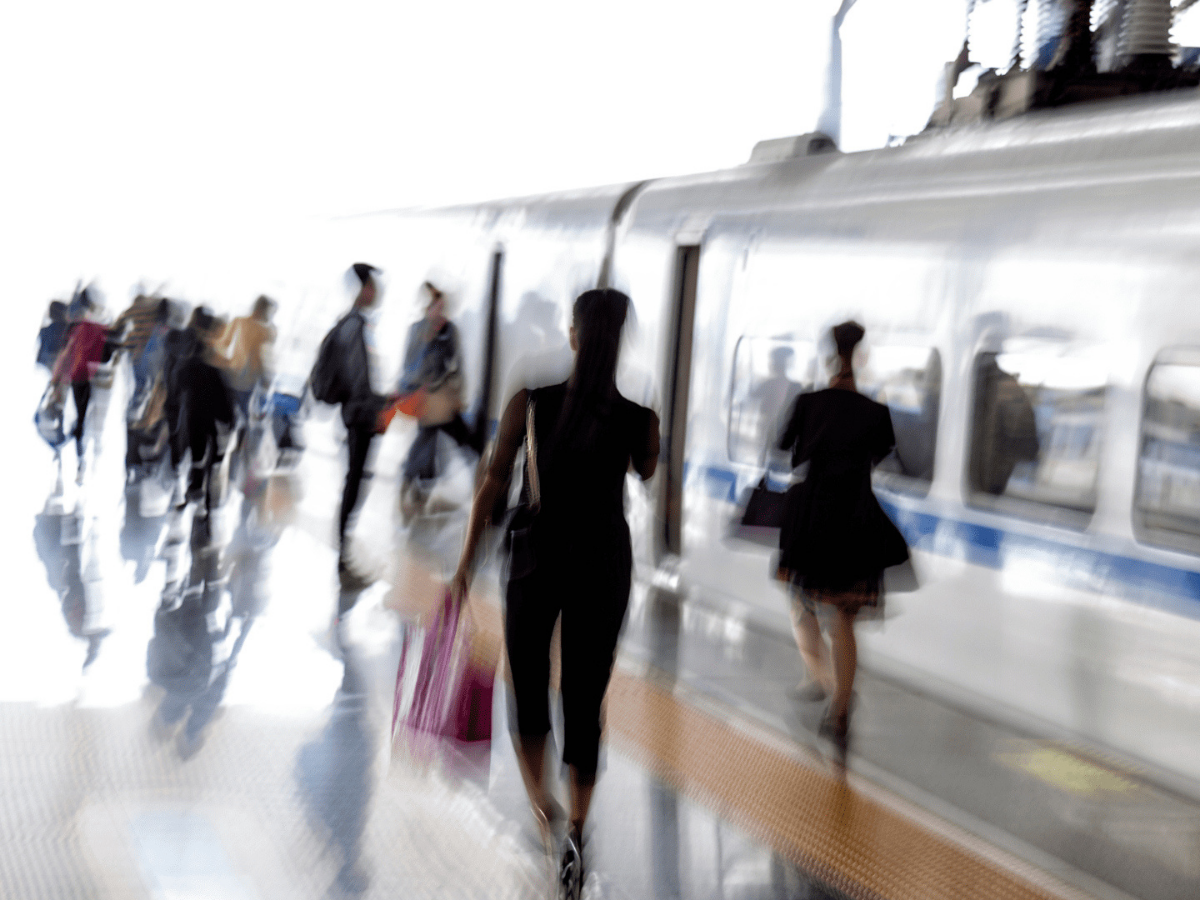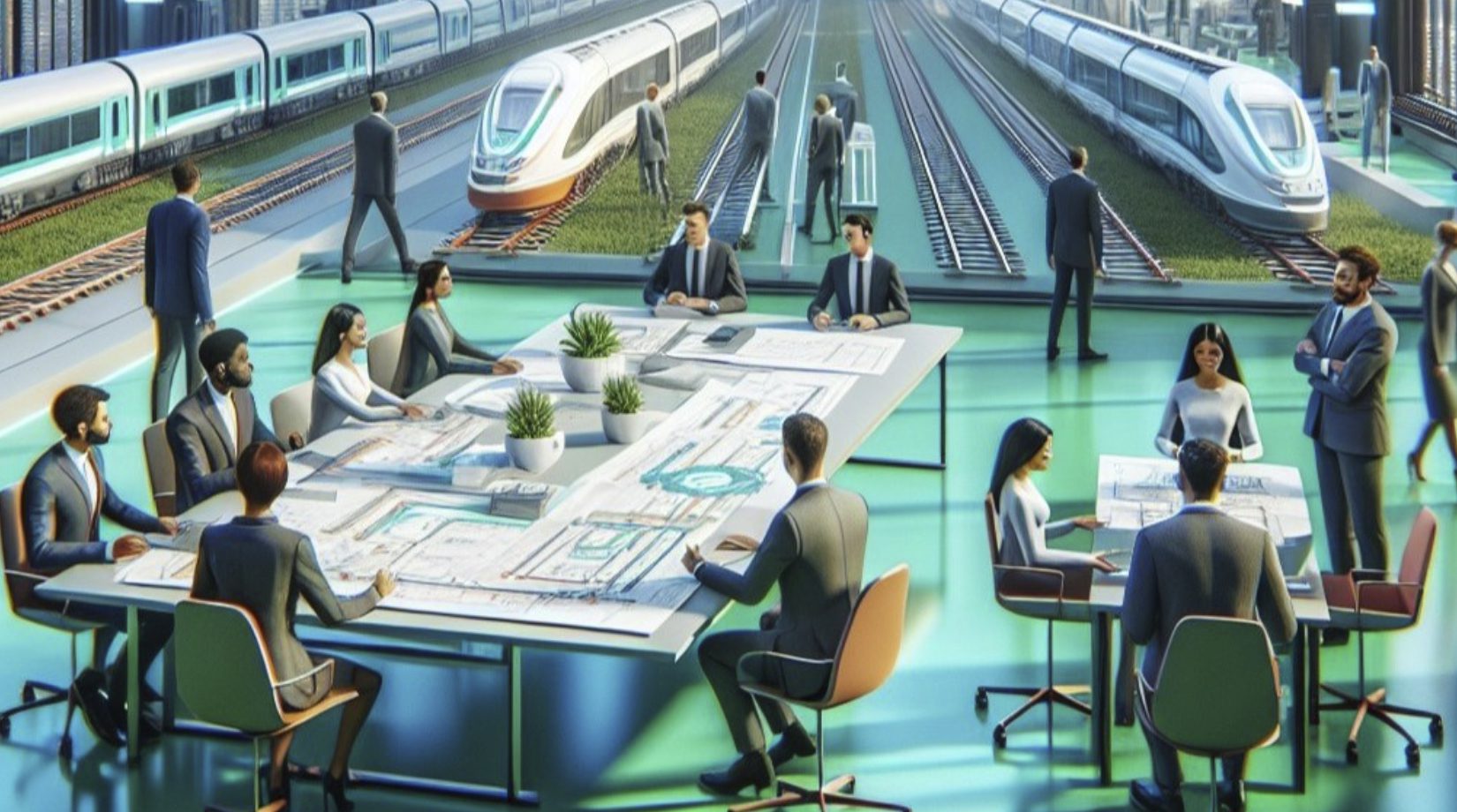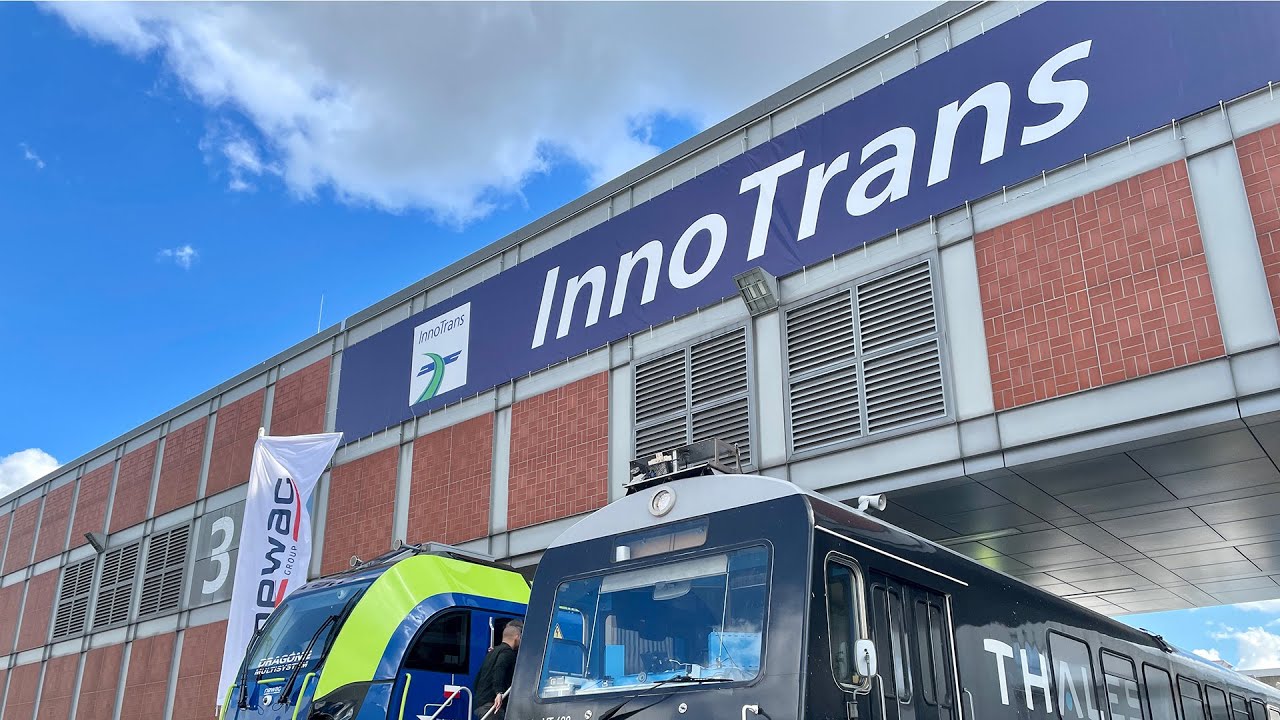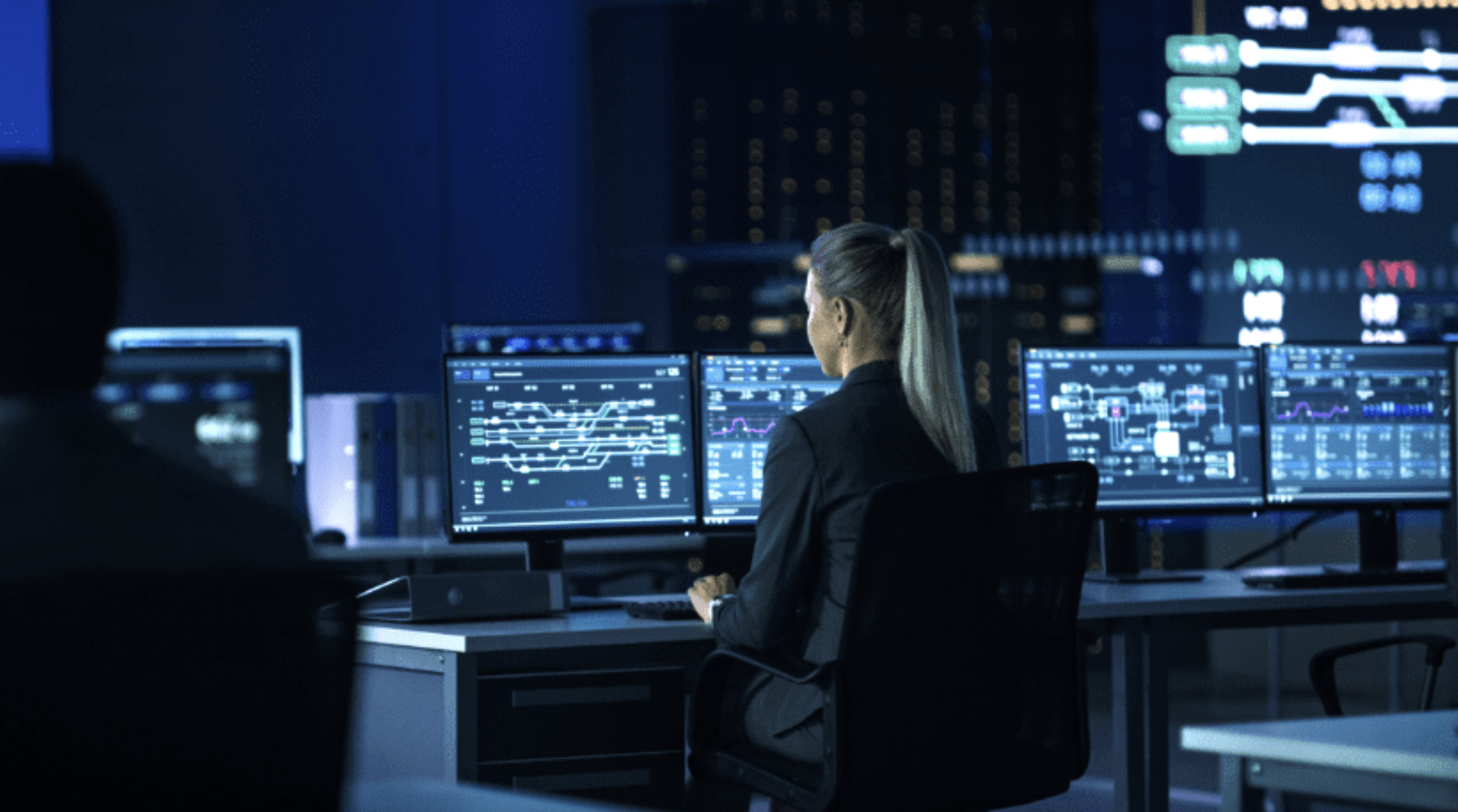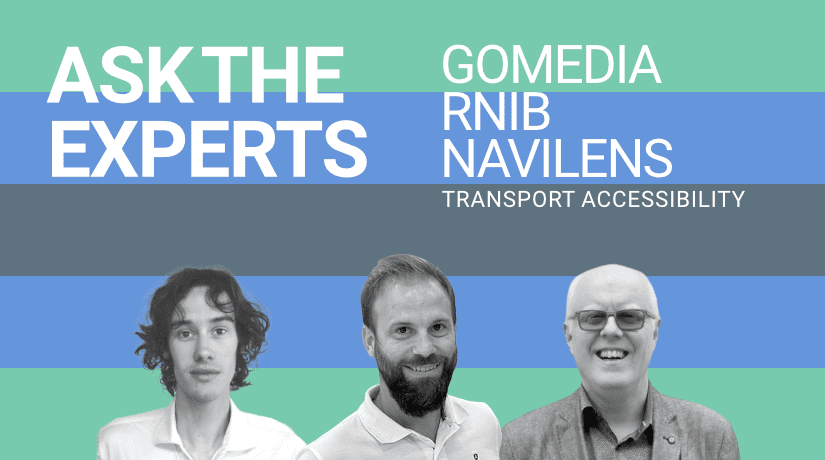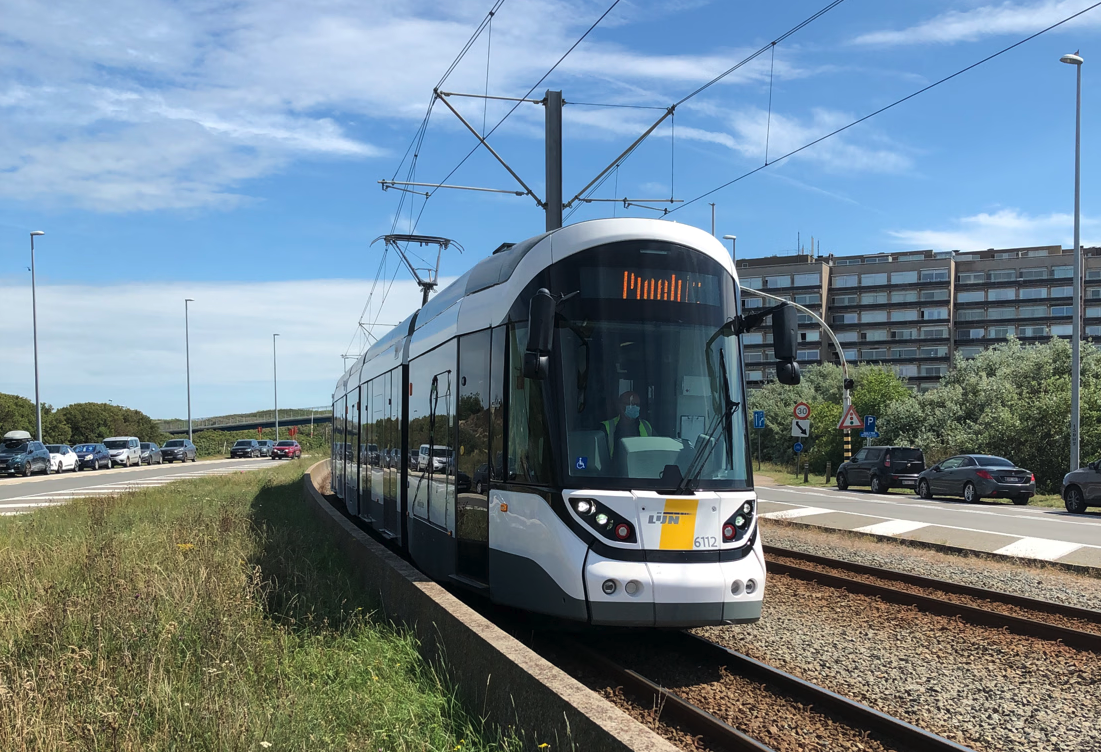Artificial Intelligence (AI) is without a doubt having an ever-growing impact on the world and fundamentally altering the way we live our lives. But when it comes to public transportation, its influence might be a little less clear – How exactly is AI being used within the transit sector to help improve the ways in which we travel?
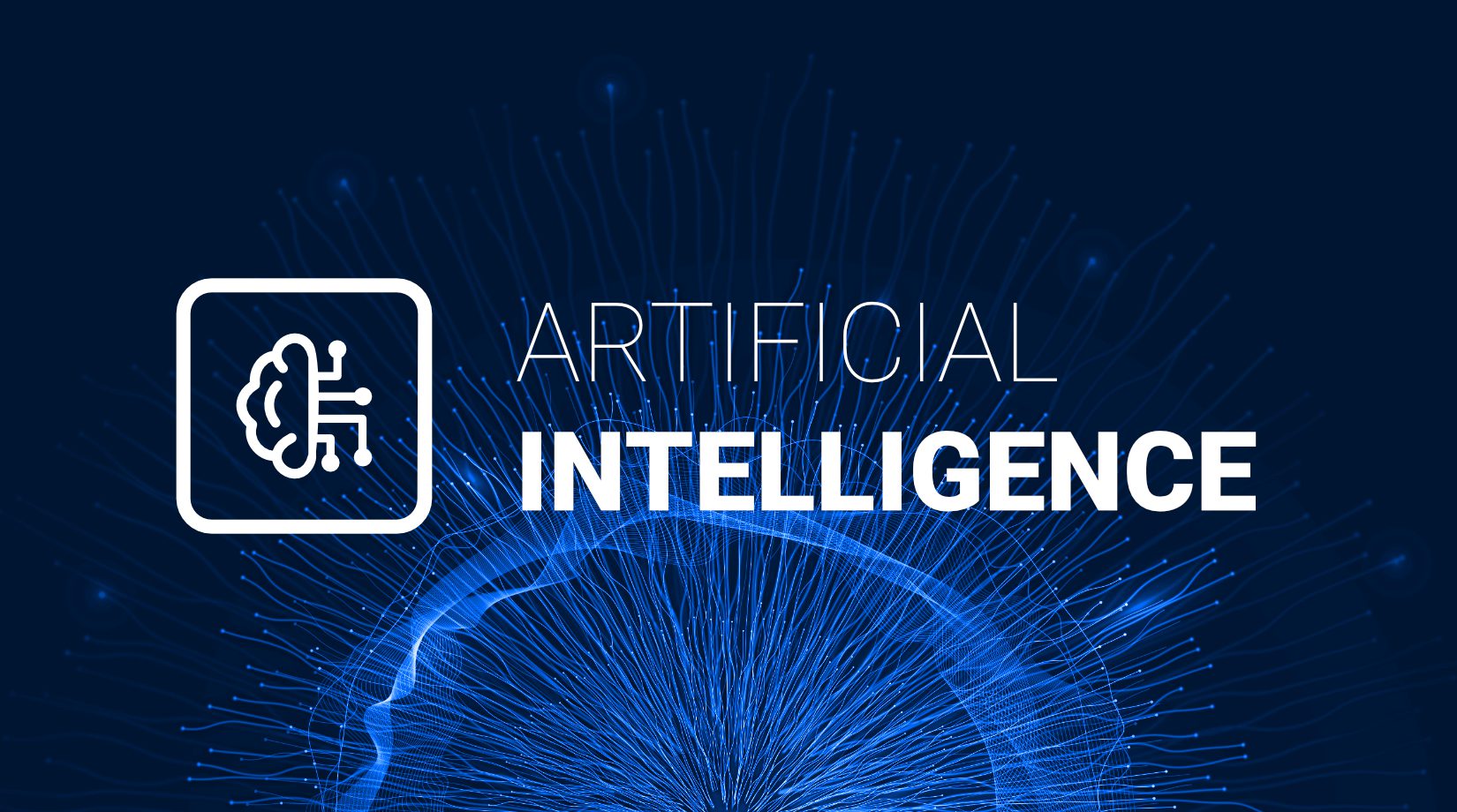
Well, at Icomera we’ve been taking advantage of AI for several years already; we’ve utilised its capabilities to further enhance how we monitor our connectivity platform, and we’re constantly exploring new ways to incorporate it to augment the applications that we offer. In this article we will explore what we mean exactly when we talk about AI, and examine some of its use cases when it comes to onboard connectivity.
Firstly, it’s useful to get a clearer understanding of the terminology you might have heard surrounding AI. Confusingly, “Artificial intelligence”, “Machine learning” and “Deep learning” are sometimes used interchangeably, but they are in fact three different but interrelated concepts.
Artificial Intelligence is the broad overarching field, with Machine Learning being a subset that includes algorithms trained to make predictions or decisions based on data. Deep Learning is a further subset of Machine Learning, employing deep neural networks inspired by the human brain.
Within public transport, various types of artificial intelligence-based systems are used. Where previously it might have been necessary to rely solely upon retrospective data analysis to optimise a solution, machine learning systems are capable of processing vast datasets in real-time to predict possible outcomes, spot irregularities, and arrive at the most effective solution to solve problems. At Icomera, we’ve used machine learning as part of our Icomera Network Insights and Control (ICONIC) cloud-based software tools, for instance; ICONIC can analyse large datasets quickly and efficiently to detect connectivity, hardware and software related anomalies and raise automated alerts (more on that a little later in this article).
Deep learning incorporates neural networks with multiple layers to solve yet more complex tasks. These networks (known as deep neural networks) are inspired by the structure and function of the human brain. One key use of deep learning is for object recognition in images and video footage, and this is how we’re leveraging the technology within Icomera’s video analytics platform. By training our video analytics model to recognise specific objects, actions or scenarios within live video surveillance feeds, deep learning enables transport operators to monitor for issues far more efficiently and proactively compared to traditional, forensic-based surveillance tools.
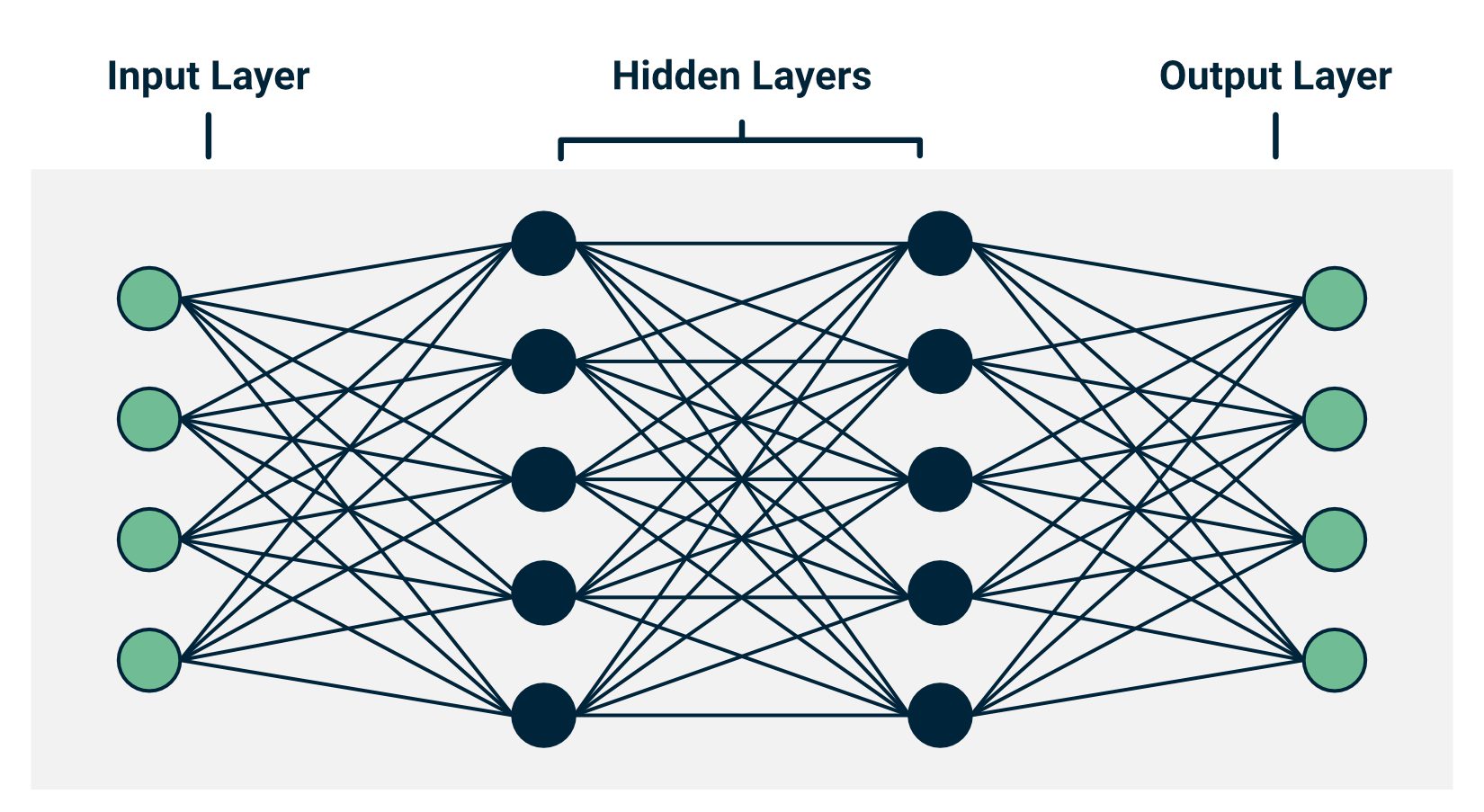
Connectivity as the Backbone for Artificial Intelligence in Transit
There is an interplay at work between leveraging Internet connectivity on public transport vehicles, harnessing computer power to process the data being generated at a network’s edge, and incorporating AI technology – Namely:
- Onboard Internet connectivity facilitates real-time data transfer, enabling seamless communication both within the vehicle and to/from the cloud.
- Edge computing allows the data being generated on a vehicle to be processed locally, close to the source, enhancing security and data privacy, and reducing the need for all data to be sent offboard to be processed. In terms of video data processing, it would in many cases be costly and use a lot of bandwidth to offload all video footage, hence edge computing is ideal for this use case.
- Artificial intelligence reaps the benefits from both the onboard connectivity and edge computing by gaining faster access to the processed data, enabling real-time analytics and decision-making to take place.
Onboard Internet connectivity enables the selection of edge versus cloud computing based on each specific use case. But even in cases where edge computing is used, the result of the onboard processing (e.g. alerts, reports, etc) still needs to be offloaded to the server side.
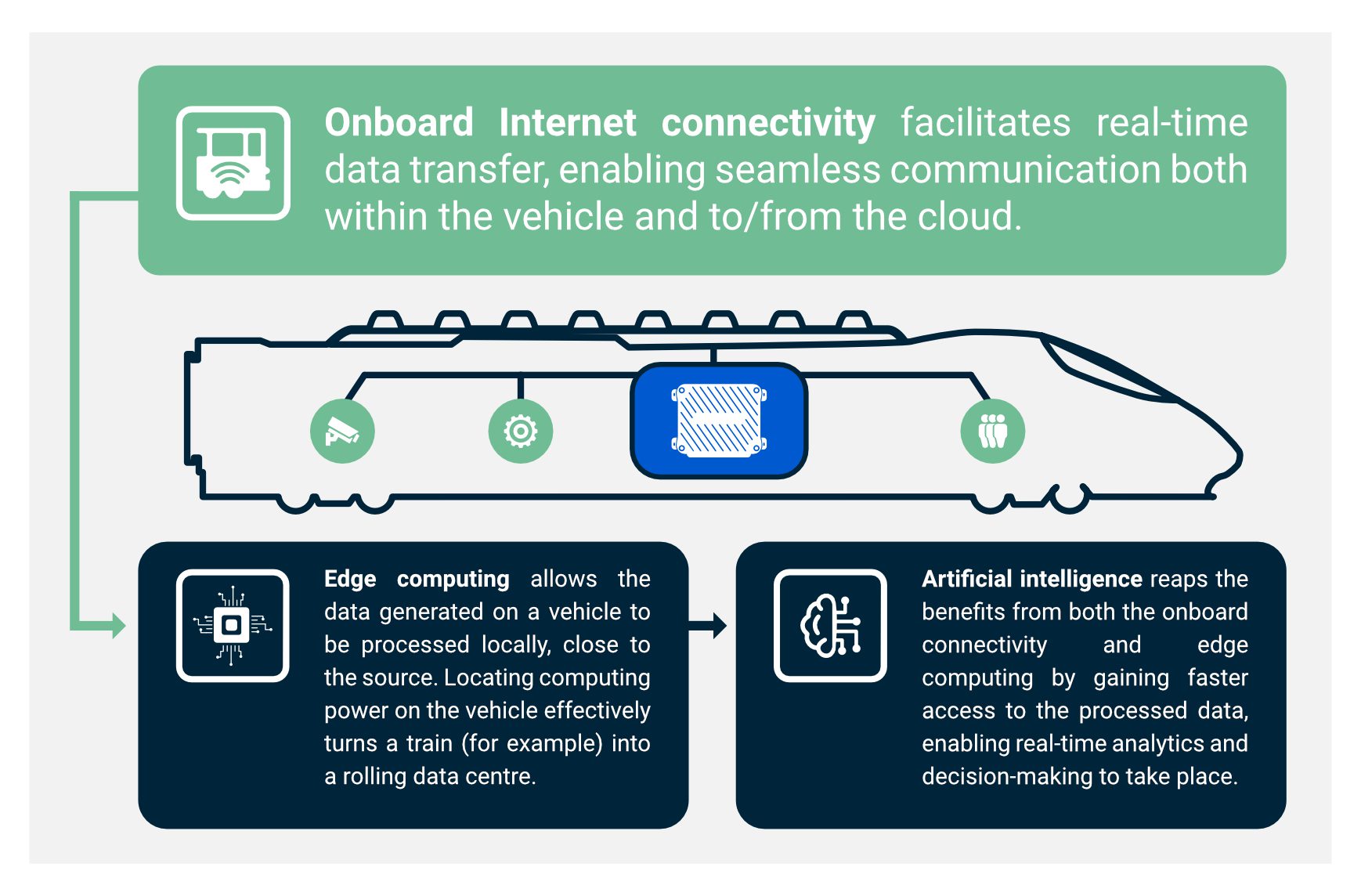
Using AI to Build Better Public Transport Networks
So how exactly can artificial intelligence be used within public transportation systems to level-up services? Well, we’ve touched briefly on a couple of examples above, but let’s now examine the topic in a little more detail…
Delivering Smarter, Safer Journeys
Video analytics systems which leverage deep learning may be used in conjunction with onboard digital video surveillance systems to intelligently interpret surveillance footage in real-time, allowing for a range of potential use cases within public transportation:
- Automatic Passenger Counting (APC): Using onboard video surveillance cameras and AI technology, transit authorities can accurately track passenger numbers; this not only helps prevent overcrowding but also empowers transport operators to keep passengers informed about the occupancy status of different train carriages. This doubles the value of a video surveillance system, since it can be used for two purposes.
- Vegetation Detection: Vegetation encroaching on or near railway lines can pose a serious risk due to collisions or sparking a wildfire. AI-powered video analytics can be used to swiftly identify and alert authorities about vegetation, preventing such hazards from occurring.
- Pantograph and Overhead Line Monitoring: By monitoring the condition of pantographs and overhead lines using AI, transport authorities can more quickly detect signs of wear, tear, or damage, potentially avoiding accidents which are disruptive, dangerous and/or costly.
- Object Detection: Utilising AI to recognise suspicious objects such as weapons, public transport authorities can more swiftly respond to potential threats. These applications empower transport operators to take immediate action, bolstering security across the network.
- Violent or Abusive Behaviour Detection: Utilising advanced AI, acts of aggression, fighting, and threatening behaviour can be automatically detected, notifying the transport authorities in real time.
Delivering Smarter, Tailored Travel Experiences
When it comes to improving the passenger experience, Icomera’s subsidiary GoMedia has collaborated with others in the industry who are leading the way in utilising AI. For instance, recently we launched ‘Project Luna’, a transport accessibility solution powered by Signapse technology that’s being trialled by UK transport operator Arriva Rail London; the Luna project uses AI to translate digital information listed online into British Sign Language (BSL) and then transmits it directly to passengers through their smart device, by way of their own personalised digital sign language avatar.
We’ve also created a passenger feedback solution which incorporates AI-sentiment analysis from Wordnerds to give transport operators unprecedented access to data regarding trends over time and by route, as well as an alert tool which can automatically warn of any priority feedback issues.

Delivering Smarter, More Efficient Onboard Systems
It’s not just onboard applications where artificial intelligence can come in handy. As mentioned earlier, when designing the ICONIC suite of cloud-based monitoring tools, we integrated machine learning to help continuously monitor the status of onboard hardware, software, and connectivity.
Should irregularities arise, ICONIC triggers automated alerts, enabling the Icomera Network Operations Centre (NOC) and transport operators to swiftly identify, assess, and resolve challenges for seamless operation. And through the integration of predictive maintenance strategies, ICONIC goes beyond mere issue detection. By leveraging machine learning, the platform can intelligently help predict potential issues before they have any detrimental impact.
This dual approach helps maintain an “always online” experience for passengers and onboard systems, optimising operational efficiency by taking advantage of predictive insights and ongoing condition monitoring.
In summary, the integration of artificial intelligence in public transportation signifies a transformative shift, enabling systems to intelligently adapt to individual preferences and real-time demands.
As AI continues to evolve, it will only increase in its ability to deliver dynamic, efficient, and secure transit experiences, addressing the needs of passengers and transport operators with ever greater efficiency.
This article was originally published by Icomera.


